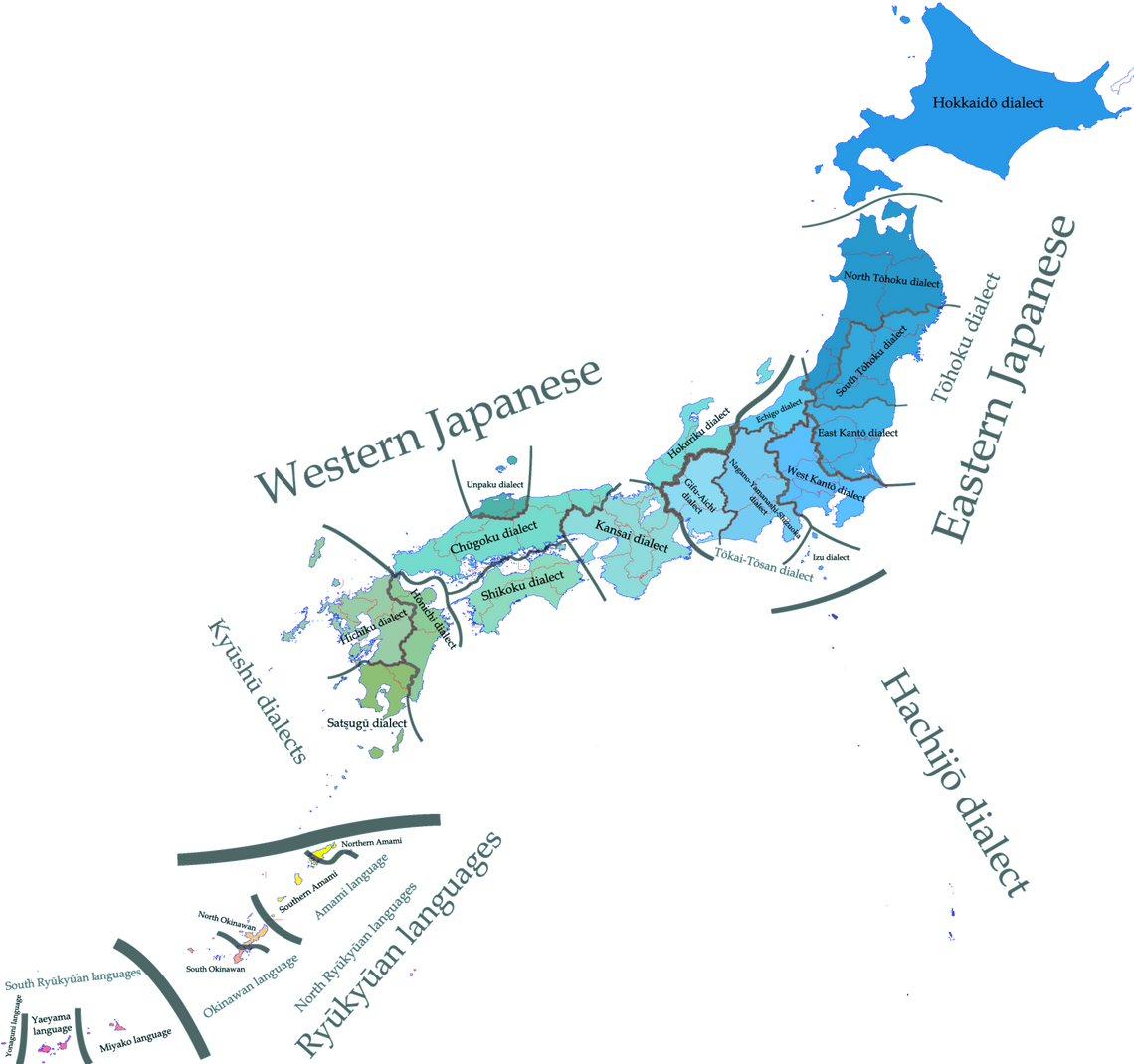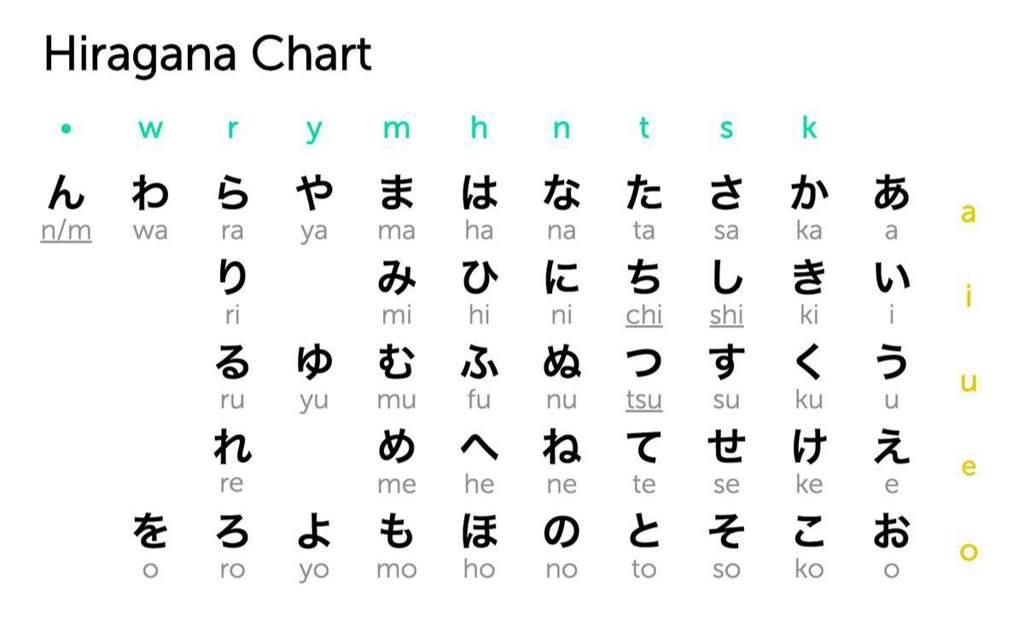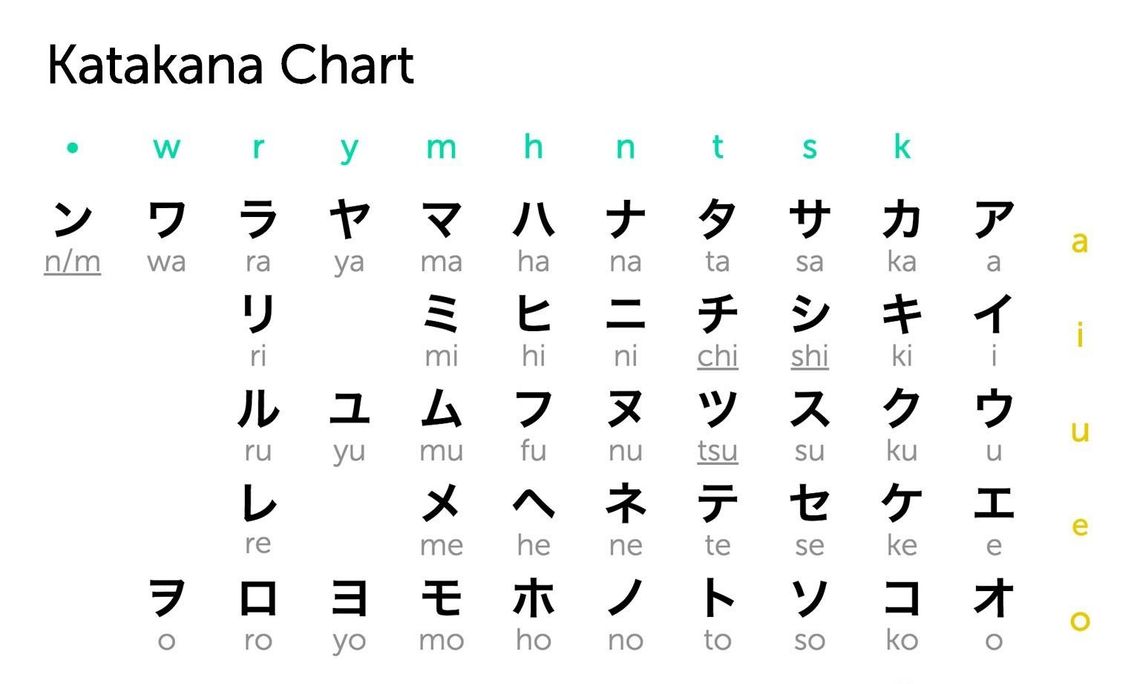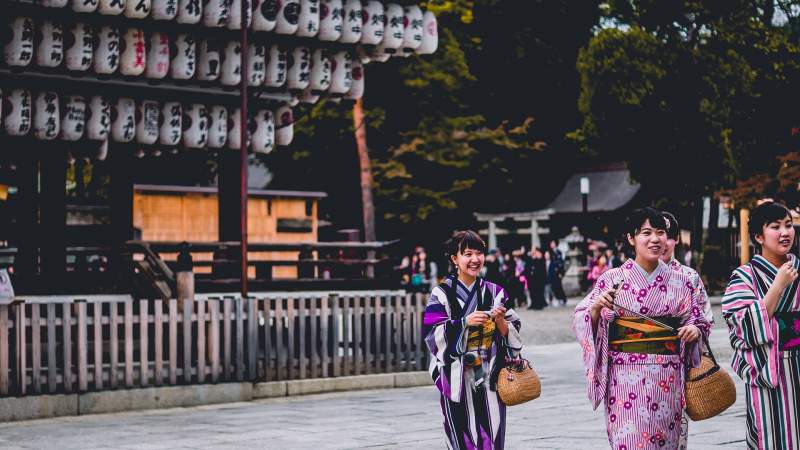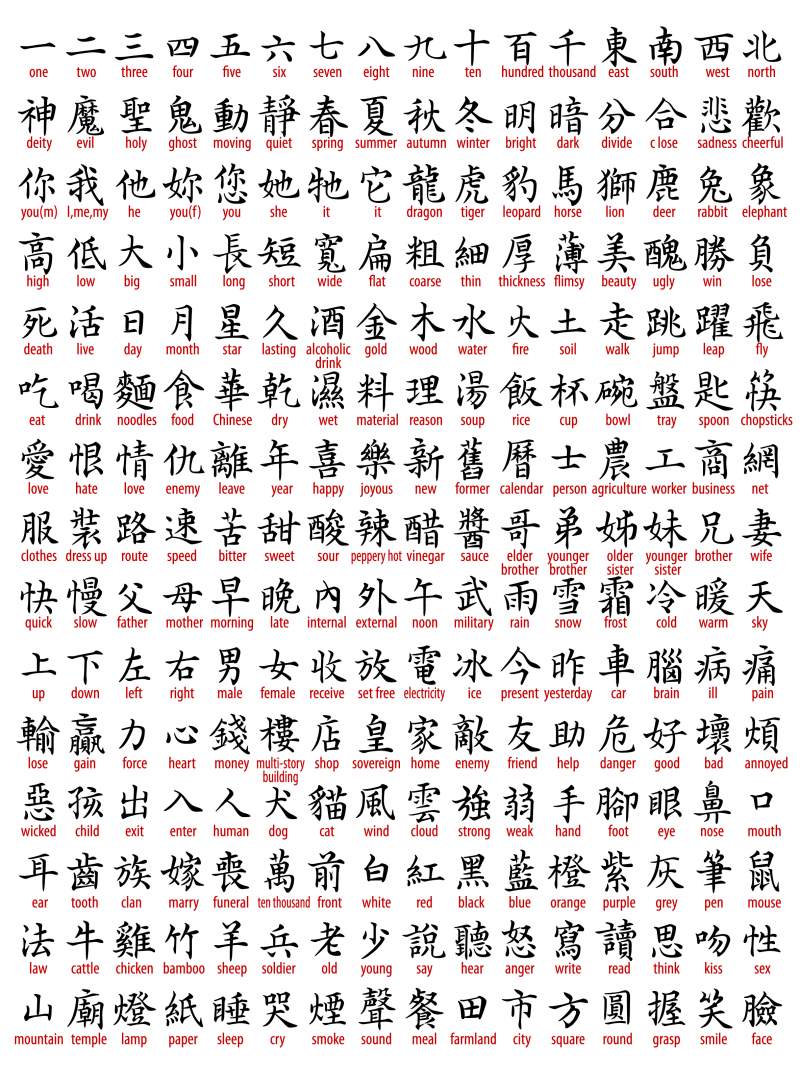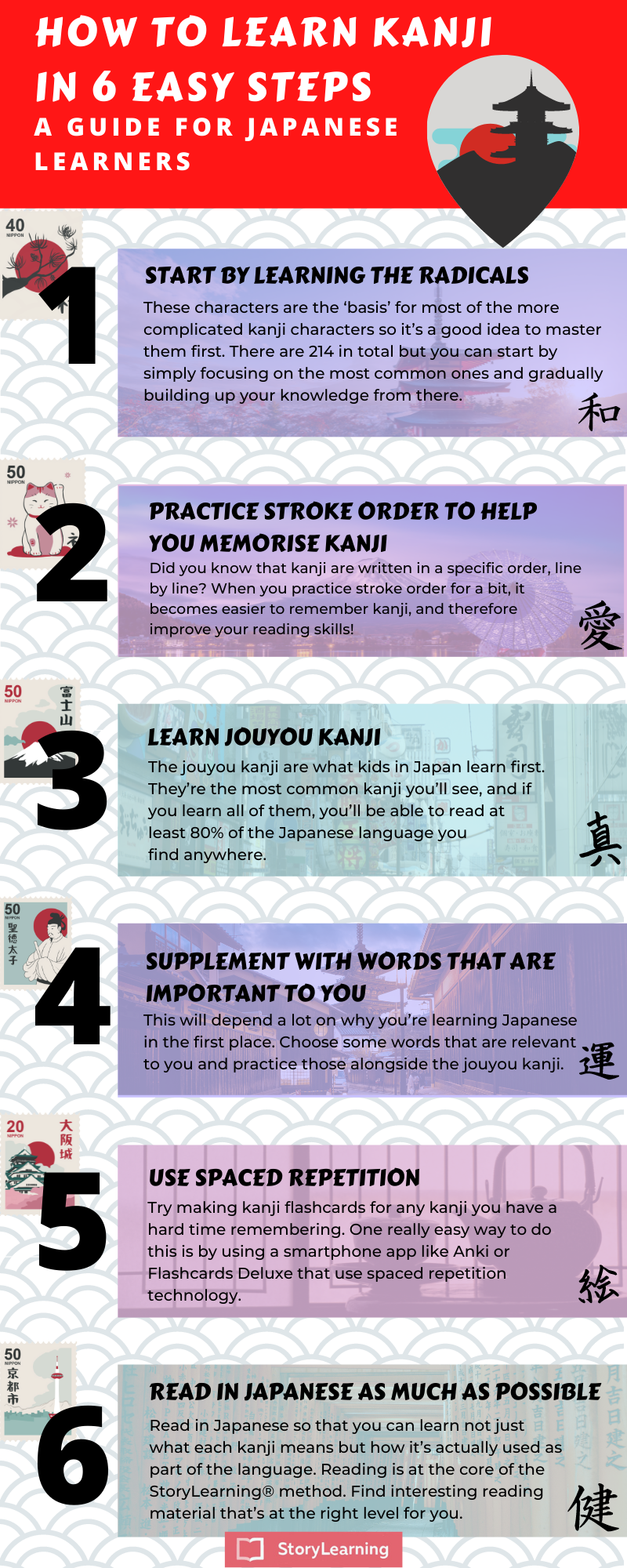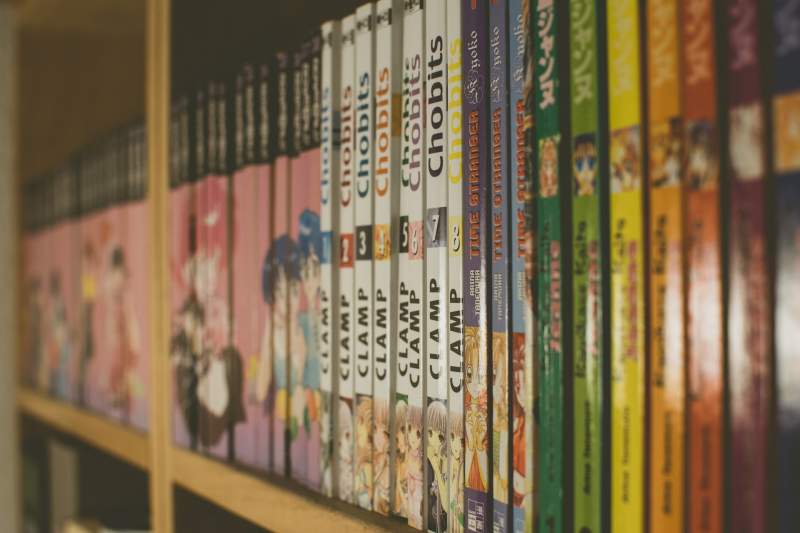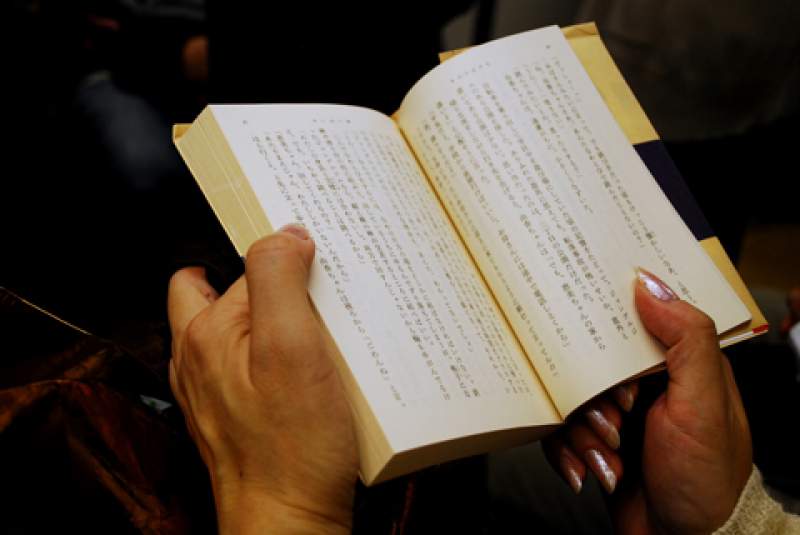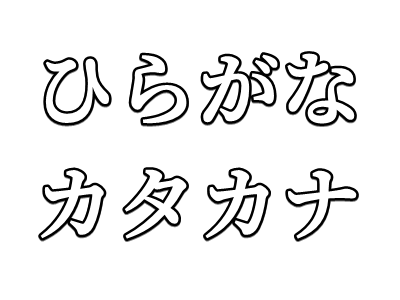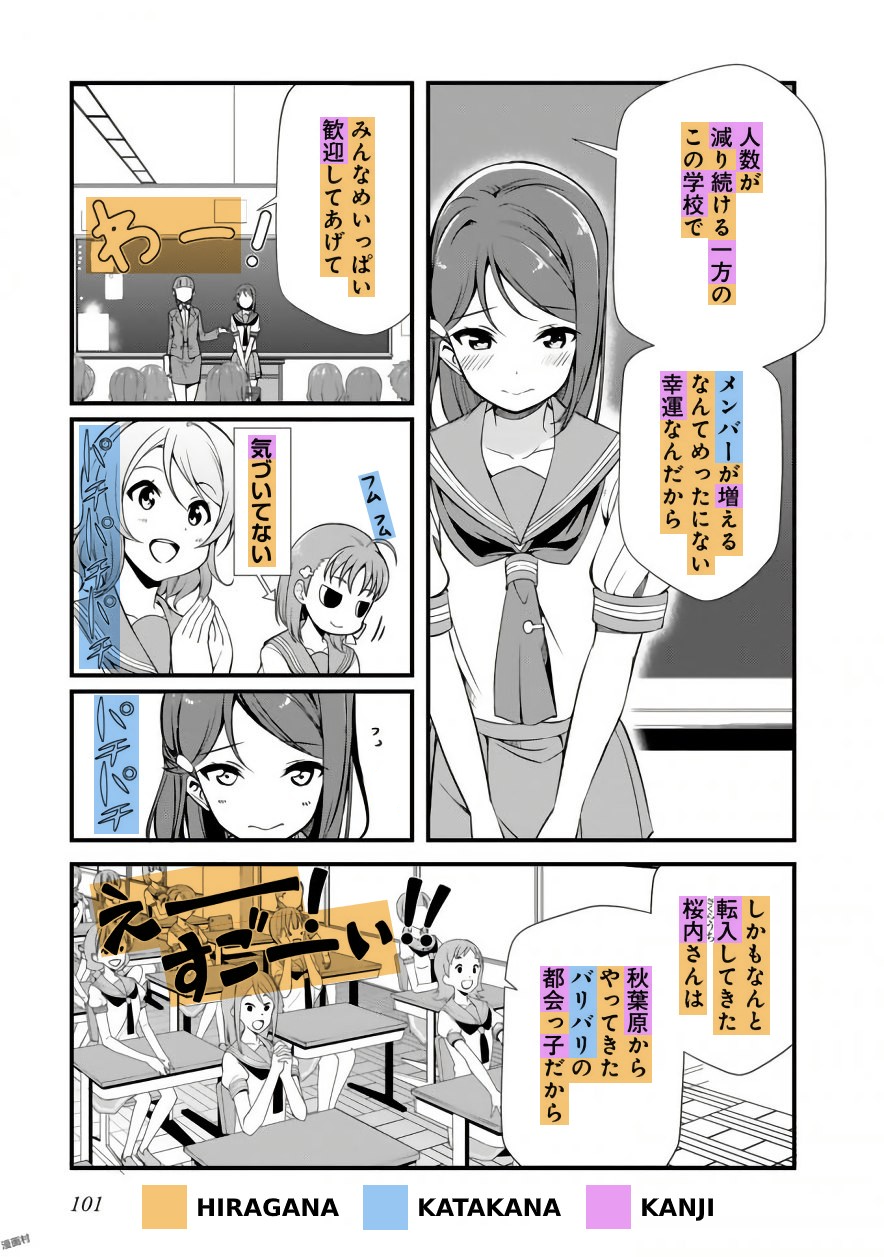Learn how to learn japanese
Learn how to learn japanese
How to learn Japanese
Above all, this article is for those who have just started learning Japanese and do not know anything about it yet. Specifically for them, we have collected many tips to get a hold and never let go of Japanese. Let’s face it: there will be difficulties, they will begin after the first few months. But this article will help you deal with them.
The article will also be useful to those who have already reached the level of Intermediate and above. Here you will find resources that will help you to build your vocabulary, learn characters and grammar, practice listening and pronunciation.
Learn languages with UniPage
Do you want to learn another language? UniPage will help you find an experienced tutor or register for a language course abroad.
Facts about Japanese
| Self-appellation | 日本語 |
| Classification | Japonic languages |
| Total number of speakers | 126 million |
| Dialects | 16 most prominent |
| Countries | Japan |
| Exams | JLPT |
Features of the Japanese language
Map of Japanese dialects
How do I learn Japanese on my own?
Before you start learning, remember a few simple rules:
So what should be your first steps in learning Japanese?
Hiragana — The Japanese alphabet
The letters in hiragana denote not individual sounds, like in the English alphabet, but rather moras, rhythmic units. They differ from syllables in that they are pronounced with the same duration, and they do not always include vowels. For example, the sound [n] (ん) in Japanese is a mora, but not a syllable.
Hiragana consists of 46 characters. Learning them is not as difficult as it seems. You can do this in a week, and just learning to read can take roughly just a day. Using hiragana is quite simple: words are written as they are heard. There are exceptions, but they can be counted on the fingers of one hand.
Resources for learning hiragana
| Resource | Description |
|---|---|
| Tofugu — Learn Hiragana | Memorizing hiragana using mnemonic techniques. The guide teaches only to read characters, but not to write. |
| Hiragana Memory Hint | Application for learning hiragana. |
Basics of Japanese pronunciation
Japanese is considered a phonetically poor language: it has fewer sounds than many others. Because of this, phonetics is usually called the easiest part of learning it. But although there are few sounds in Japanese, most of them are very different from the English ones: many English sounds don’t exist in Japanese and vice versa, there are only 5 vowels in comparison to the English 15, and so on. Therefore, it is important at the very beginning to devote time to the basics of pronunciation. At least to read hiragana in Japanese, not some other language.
Do not go too deep: in the initial stages, you should not be interested in Japanese pitch accent. Just know that it exists. But the pronunciation of the Japanese [r] sound (which is closer to [l] in [l]ip than to English [r]), the peculiarities of reading ふ つ ち し and long vowels are the things you must know.
You can read about this in more detail here.
How to type in Japanese
Some modern tutorials do away with traditional writing altogether and go straight to typing characters on a computer. This is due to the fact that situations when we have to write by hand happen less and less often. Typing in Japanese is very easy: you can master it in less than an hour. You just need to install the Japanese keyboard layout on your computer, and then you can enter Japanese characters using their Latin readings. If you have any difficulties, refer to the video below.
But learning to write hiragana is still worth it — without it, you will have a hard time with kaiji. And if you go to Japan, especially to study, you cannot avoid it: to this day, the main tools of the Japanese bureaucracy are paper and pen.
What is the Japanese hieroglyph
You will begin encountering kanji characters from the very beginning of studying, so getting around them is impossible. First of all, you need to figure out what they are. In short, a hieroglyph is a symbol. It differs from the letters of the alphabet in that it has not only reading but also meaning. A hieroglyph can be a word in itself, or it can be part of a word made up from several hieroglyphs. At the same time, each kanji has two readings — Japanese reading, or kunyomi, and Chinese — onyomi. Details about the difference in readings are given here, and about the structure of hieroglyphs — here.
First kanji and words
Once you understand the basics, you can start learning kanji. It is necessary to memorize not only the spelling and meanings of hieroglyphs, but also their readings, and the words in which they are included. This way the kanji will stay in your head for a long time.
You determine the scope of work yourself. A good learning pace is 20-30 characters and 100 words per week, but 10 kanji is also fine. How exactly you memorize hieroglyphs — by writing in a notebook or by saving in an application — is not so important. The main thing is just to do it. Though we can say from personal experience that handwritten hieroglyphs are remembered better.
Kanji is often learned later, several months after the start of studies. Learning hieroglyphs early, however, has one big advantage: once you plunge headlong into grammar, you will already have a good vocabulary to compose sentences and practice. You will immediately be able to read what is written in the textbook, therefore you won’t be distracted by unfamiliar words.
Still, you should not try to memorize all the hieroglyphs that you come across, memorize only the major ones. Words consisting of complex kanji, or conversely, lacking kanji, can be written and taught in hiragana.
Resources for learning kanji
| Resource | Description |
|---|---|
| Wanikani | An application for memorizing kanji and words, built on mnemonics and spaced repetition. Its downside — the application is paid: it costs 9 USD per month or 89 USD per year. |
| Quizlet | One of the most popular apps, great for learning hieroglyphs and new words. Quizlet allows you to create flashcards yourself or use ready-made sets. |
| Memrise | An app for learning Japanese phrases and words. Based on the principle of spaced repetition, has a nice design, uses mnemonics. |
| Japanese Kanji Flashcards | A set of cards with the first 300 kanji. The set is very high quality, but also expensive — 36 USD excluding delivery. Suitable for those for whom the application is not enough and it is important to have its physical equivalent. However, you can make cards yourself, the old-fashioned way — with nothing more than paper, scissors, and some elbow grease. |
| Japanese Kanji Study | An application designed specifically for learning kanji. In it, you can not only memorize the readings and meanings of hieroglyphs but also practice writing. However, the interface may seem overly complicated. |
| Jisho.org | English-Japanese and Japanese-English online dictionary. You can search both for words and individual kanji. The kanji pages have detailed information with readings, meanings and usage examples. A mobile application is also available. |
| Tangorin | Another online dictionary. The functionality is the same as that of Jisho.org, plus a hieroglyph search by key is available. There is also a mobile application. |
| Tatoeba | A corpus dictionary. It contains examples of the use of words in context and their translation into different languages. |
Katakana
At the same time as learning kanji, you should start learning katakana. Katakana is the second of the Japanese alphabets. It is mainly used for writing foreign and loaned words. For beginners, it is usually more difficult due to the fact that it is used less often. In it, as in hiragana, there are 46 symbols that denote the same sounds. Some of the letters are similar, but most are different beyond recognition. Don’t worry, with additional resources it is not difficult to learn them.
Катакана, японский алфавит
Resources for learning katakana
| Resource | Description |
|---|---|
| Tofugu — Learn Katakana | Memorizing katakana using mnemonic techniques. The guide teaches only to read characters, but not to write. |
| Kana | Application for learning katakana and hiragana. |
Japanese grammar
Once you have a minimal vocabulary, you can start practicing grammar. You will probably already know something about the word order and cases by then. The tutorials will help you delve into the topic. All the material in them is built according to a well-thought-out program so that the level of difficulty will increase gradually. The disadvantage of textbooks is that most of them are designed for lessons with a teacher, so they do not explain many things.
Alternatively, there are many resources devoted to grammar, and on the website Hinative, you can ask questions to native speakers. If you are learning the language on your own, make sure to check their answers in several sources.
And yet, you will surely come across topics that you won’t be able to find answers to, no matter how hard you try. In this case, it is worth hiring a tutor. Do it as early as possible, especially if you have little experience in learning foreign languages. However, do not rely entirely on the teacher. You need to learn hieroglyphs on your own (and do it consistently). The teacher will not do it for you, and they are given too little attention in the textbooks.
Japanese tutorials for beginners
Grammar
| Resources Resource | Description |
|---|---|
| A Dictionary of Basic Japanese Grammar A | Paperback guide to Japanese grammar. Covers more topics than any other book, website, or tutorial. The explanations are clear and easy to understand, with many examples. |
| Tofugu An | A portal dedicated to the Japanese language. Lots of useful articles, including grammatical ones. |
| Kim’s Guide to Learning Japanese | A textbook and a grammar reference book. |
Reading in Japanese
By reading, you fix familiar words and expressions in your memory and learn new ones. But if you have just started to master the language, reading authentic Japanese texts will not be possible for you. You need adapted texts in either hiragana or kanji with furigana. Furigana is a kanji reading added next to it in hiragana. These can be found in textbooks, but children’s books of fairy tales are also suitable. You can also use the website Satori Reader. It has texts for different levels, and they can be adapted to suit your needs: add furigana to all the hieroglyphs or only to some, leave spaces between words, or remove them — like in a proper Japanese text. You can find a detailed guide on using the application here.
Resources for reading practice
| Resource | Description |
|---|---|
| Satori Reader | Collection of texts for different levels with many options for customization. The materials can not only be read, but also listened to: they are all supplemented with audio recordings. With their help, you can practice pronunciation by repeating the text word for word after the speaker. |
| Japanese fairy tales | Children’s stories written in hiragana. |
| EhonNavi | Site with Japanese books for children. The only downside is that the site itself is also in Japanese. |
| CosCom | Short news for beginners. The text can be switched between romaji, kana and kanji. |
| Kodomo Asahi | Children’s version of the famous Asahi newspaper. The vocabulary is simpler there, and the hieroglyphs are signed with furigana. |
| Matcha | Japanese travel and culture magazine. Available in a simplified version with furigana. |
| Read Real Japanese | Books for intermediate to advanced level. |
Listening in Japanese
Assignments are included in all good textbooks. You can do them both with a tutor or on your own: there is usually a script of each recording at the end of the book. True, the dialogues in the textbooks are always very similar — this is either a trip to the bank, a conversation with a teacher, or a «Sorry, I lost my wallet, can you tell me where the nearest police station is?» sort of deal. It gets boring quickly, so additional resources will come in handy.
For beginners, FluentU is great. The materials there are divided into levels, but they contain real unadapted Japanese. Therefore, classes there are a challenge, but a doable one.
You can also use children’s cartoons to practice listening. For example, Ganbare! Oden-kun (がんばれ!おでんくん) or Nihon Mukashibanashi (日本昔話). The wording in them is not very difficult, so you can study up to the Intermediate level. Particularly useful words can be written out and memorized. On your first watch, it’s best to turn off subtitles and try to understand as much as possible yourself. And then, after viewing it a few times, turn the subtitles on and check how well you understand the words.
Resources for listening
| Resource | Description |
|---|---|
| FluentU | Site for language learning through video and audio. The materials are divided into levels, with subtitles in English and Japanese. It is convenient for seeing the meanings of unfamiliar words and adding them to the study lists. The resource is paid, but there is a trial period. |
| JapanesePod101.com | Short audio and video lessons in Japanese for any level. |
| News in Slow Japanese | Japanese news read slowly and clearly. |
| The Japanese Page A | A resource designed specifically for beginners. Contains Japanese dialogue recordings and English explanations. |
| Learn Japanese Pod | Podcasts in English for beginners in the form of audio lessons, where teachers analyze simple Japanese conversations. The vocabulary is not complex, and the speech is slow. |
| Erin’s Challenge | Instructional videos about exchange student Erin’s adventures in Japan. Basic vocabulary, everyday situations, and funny dialogues. |
| NHK Radio Podcast | Podcasts from NHK Japanese broadcasting company for a high level of language proficiency. The vocabulary is complex and the speed of speech is unadjusted. |
Speaking Japanese
Stress in Japanese
Since we have reached the point of speaking, it’s time to say a few words about pitch accent. Contrary to popular belief, accent exists in Japanese. There it is done by raising and lowering the voice and somewhat resembles singing. Actually, that is why it is called «pitch.» The meaning of a word sometimes depends on the correct stress.
Again, at the beginner level, you should not get into the depths and try to memorize the accent outline of each word, but it is still worth learning the basic rules, especially since there are only three of them. Find detailed information here. You can check the pronunciation of a word in the OJAD dictionary.
The correct use of stress will make your Japanese speech much clearer and more beautiful than most foreigners’ (especially beginners). Favorite anime and TV series will help you to improve your pronunciation. Pay attention to the way the characters speak when you watch them. Repeat them word for word, copying the intonation. This technique is called «shadowing.» If you are a big fan of Japanese culture, you will not notice how you start to speak more naturally.
Finding opportunities to speak
You can try to find a language partner on social media or apps like Tandem or Easy Language Exchange. Another way is to enroll in courses or hire a teacher.
Create a language environment around you
The more you interact with the language, the faster you progress. So surround yourself with it as much as possible. If you are reading this article and have reached this far, you have probably already watched a huge number of anime. Passion will bring real benefits if you revisit your favorite titles with Japanese subtitles. Yes, it will be difficult, but that is why it is worth starting with what you have already watched — after all, you know perfectly well what is going on. And this time, you will definitely pick up something other than kawaii and senpai.
If you are not a fan of anime, then Japanese culture has many other interesting things to offer, from the classics of world cinema to insane TV shows. And watch more Japanese YouTube. Sometimes fascinating things are hidden where you least expect them — for example, in real estate reviews.
Where to learn Japanese?
You can study the language not only on your own but also in courses and with a tutor. Each method has its own advantages.
| Resource | Features |
|---|---|
| DuolingoPlay | Gamified language courses. |
| Memrise | Suitable for learning basic words and expressions. Poor for learning kanji and grammar. |
| LingQ | Language learning resource. The assignments and materials cover different aspects: kanji, reading, listening. |
| Learn Japanese From Zero | Tutorials on YouTube based on the book Learn Japanese from Zero. |
| Learn Japanese on Reddit | Community learning Japanese. Here you can learn about personal experiences, difficulties, and lifehacks. |
| Onomatopedia | Resource for learning onomatopoeic words. In Japanese, they play a very important role — without them, your speaking will not be natural. |
| YouTube channel JapanesePod101.com | A channel for learning Japanese. Lots of assignments and explanatory materials. |
Why learn Japanese?
Most people start learning Japanese because of their interest in the culture of the country, but not for practical reasons, unlike, for example, Chinese. Indeed, all 126 million native speakers of Japanese live in one country, so the language’s applications seem limited. Is that so?
Travel
Japanese is unlikely to be useful anywhere outside the Land of the Rising Sun — unless you work as a translator. But on the other hand, Japan itself, although not very large geographically, is surprisingly rich — both culturally and naturally. The northernmost island, Hokkaido, is located very close to the Russian Sakhalin, while the southernmost ones, Okinawa and the Ryukyu archipelago, have a climate similar to Hawaii. At the same time, unlike many countries, it is pleasant to go to Japan at any time of the year. Every season there is bright, with its own advantages: in summer — lush greenery, fireflies, and cicadas; in autumn — red maples; in winter — camellia and persimmon buds under the snow; in spring — blooming plum and sakura. Each prefecture in Japan has a rich history and traditions. Local dishes, crafts, and customs exist in many parts of Japan, even very small villages. However, outside of Tokyo, Osaka, and Kyoto, English is spoken rarely, if at all. So, without knowing the language, getting a complete picture of Japan will not be possible.
Itsukushima Shrine, Miyajima Island, Hiroshima Prefecture
Japanese for studying
Education in Japan is also respected outside the country: according to QS ranking, five Japanese universities are included in the top 100-world universities. Education is not cheap, on average it costs from 7,000 USD per year. But there is an opportunity to study for free.
Kobe University campus, Kobe
Japanese for work and immigration
Many people dream of moving to Japan because of the high standards of living. The most realistic way to do this is through employment, and for this, you will definitely need the Japanese language, and at a fairly high level. To work in a Japanese company, you will have to learn not only the specialized vocabulary but also keigo (敬 語) — «polite language.» Without it, communication with customers, or within the company itself, will not be possible.
Japanese exams — Japanese language levels
There are various tests to evaluate foreigners’ knowledge of Japanese. The most important and most common of these is JLPT, or nihongo noryoku shiken (日本語能力試験). JLPT has five levels, from N1 to N5, with N1 being the highest and N5 the lowest. The levels roughly correspond to the European CEFR scale from A1 to C1 (N5 = A1, N1 = C1). The exam tests the student’s ability to read and use hieroglyphs, as well as listening comprehension. At the same time, there are no parts with writing and speaking in the test, which is why it is constantly criticized.
The JLPT test provides official proof of Japanese language proficiency. It can be useful for several purposes:
| Level | Number of kanji | Number of words |
|---|---|---|
| N5 | 100 | 800 |
| N4 | 300 | 1500 |
| N3 | 650 | 3700 |
| N2 | 1000 | 6000 |
| N1 | 2000 | 10000 |
Share to
Learn languages with UniPage
Do you want to learn another language, improve your speaking skills or prepare for exams?
UniPage specialists will select language programs based on your goals, interests and budget. We will choose a suitable country, course intensity and help you with enrollment.
Our clients get up to 30% discount from language schools.
How To Learn Kanji In 6 Easy Steps – A Guide For Japanese Learners
by Olly Richards
So you’re starting out on your Japanese journey.
Maybe you’re trying to follow along with your favourite song lyrics, or maybe you found a Japanese book or manga you’re super excited to read.
Maybe you want to write a letter to your new Japanese pen pal.
There’s just one problem…
In order to read or write in Japanese you need to know something very important — kanji.
By the way, if you want to learn Japanese kanji fast and have fun while doing it, why not check out my Kanji book for Japanese learners?
30-Day Mastery: Confident Kanji
Master the fundamentals of Kanji in the next 30 days, with this innovative, story-based immersion method. Just read one chapter per day, complete the exercises, and watch as your reading, writing and kanji comprehension improve dramatically!
(Available in Paperback and on Kindle)
If you prefer a comprehensive course that will teach you all aspects of Japanese in detail, my top recommendation is Japanese Uncovered which teaches you through StoryLearning®.
With Japanese Uncovered you’ll use my unique StoryLearning® method to learn Japanese naturally through story… not rules. It’s as fun as it is effective.
If you’re ready to get started, click here for a 7-day FREE trial.
What Are Kanji?
Kanji are one of three elements used in the Japanese writing system.
They are a set of written characters that have been adopted from the Chinese writing system and are used together with the native Japanese hiragana and katakana characters to write Japanese.
So if you want to read or write in Japanese, you’ll need to learn them!
Let’s take a closer looker at the three elements of written Japanese and the role of kanji among them.
Hiragana, Katakana And… Kanji
Whenever you look at a Japanese sentence, you probably see a bunch of small, relatively simple characters, like this:
Those are hiragana, one of the ways that Japanese people write down the sounds of their language.
You might also see other, similar characters that look a bit chunkier:
Those are katakana, an alphabet Japanese people use to write down words that aren’t originally Japanese.
But maybe, mixed in with those characters, you spot a big, intimidating blob, like this: 漢字を読めますか
Those are kanji, and they’ve been intimidating new learners of Japanese for, well, basically as long as they’ve existed.
Which is like 1500 years at least!
The Benefits Of Kanji Vs. Hiragana
Kanji are borrowed from Chinese and they’re more complex than hiragana or katakana.
For example, you might know that the Japanese word for “water” is mizu.
We can write that in hiragana as みず.
This is actually phonetic, as hiragana sounds out the word:
However, we can also write the same word in kanji as 水.
It’s still pronounced mizu, but now we can represent that entire idea in one single character instead of “spelling it out” in hiragana with two separate characters.
Sometimes, if you put two kanji together, they can make a new word based on their two individual parts.
Did you know that 漢 (kan, or かん) means “Chinese”?
And the character ji (字, or じ) means, well, “character.”
What happens when you put them together? 漢字!
That’s right, it’s kanji (かんじ), which literally means “Chinese character”!
How appropriate, right?
Remember, Japanese borrowed kanji from the Chinese, so of course it makes sense to call them “Chinese characters.”
Hiragana is a convenient way to “spell out” a word if you don’t know how to write its kanji but you do know how to say it.
However, using kanji saves a lot of space, and if you learn to understand how kanji are made, you may even be able to guess what some characters mean or how to say them, even if you’ve never seen them before!
However, in order to do that, you have to know how kanji are set up, which is what we’ll look at next…
How Are Kanji Set Up?
Think of kanji like a little puzzle; they’re made out of pieces, and each piece has a specific place where it fits in.
As an example, let’s take a look at the kanji 海, or うみ (umi).
If we take it apart, we can get a hint on what it means.
Try breaking it into a left side and a right side.
On the right side we can abstract 毎, a regular old kanji that we might find anywhere.
On the left side that leaves u with 氵, which means “water”.
Could it be that the kanji 海 which is made up of these two more basic parts has something to do with water?
海 is the kanji for “ocean”.
If you had known that 氵means water, you might have been able to guess what this word meant if you saw it in a sentence.
The Transformation Of Radicals In Kanji
But hang on a second…
We already know from our previous example that 水 means water, so what’s going on?
Why do these two look different when they mean the same thing?
This piece of kanji that gets tacked on to a bigger kanji is called a radical, and radicals change shape when you put them onto another kanji.
There are 214 radicals in Japanese and these are the base characters from which all other more advanced characters are built.
You might see this in, say, “earth” (土) vs. 塚, a “little hill” or burial mound.
The earth symbol looks almost the same appears on the left side of this kanji.
But when it is used as a radical in this way, we can see its bottom line start to slant upward.
Can you see clearly how the line at the bottom of 土 slants up when it become part of 塚?
It also happens with 人, which means “person.”
If we use 人 as a radical, suddenly “woah!”, we get 侠 (“tomboy”)! It hardly looks the same.
Sure, it can be frustrating to think, “Wow, I just learned some kanji, and now I have to learn them again in order to be able to tell what they are when they’re radicals!”
But the good news is, there’s not really that many radicals.
If you just learn a few common ones, like the water, earth, and person radicals above, you’ve already got a big head start.
Whenever you take a look at a kanji, see if you can spot a radical and think about whether it can give you a clue on the kanji’s meaning.
How To Learn Kanji? 6 Steps To Get You Started
The first step is always the hardest, they say! So to make it a bit easier for you, here are 6 simple steps you can take to start learning Kanji right away.
1. Start By Learning The Radicals
As you saw in the last section, radicals a pretty big part of how kanji are set up!
These characters are the ‘basis’ for most of the more complicated kanji characters so it’s a good idea to master them first.
There are 214 in total but you can start by simply focusing on the most common ones and gradually building up your knowledge from there.
2. Practice Stroke Order To Help You Memorise Kanji
One of the best ways to memorise kanji is to learn to write in kanji.
Did you know that kanji are written in a specific order, line by line?
This is called “stroke order,” and while it seems like it wouldn’t make much of a difference, it’s really important.
Take a look at 海 again.
When writing this kanji, you would start with the topmost dot on the left.
Then the second dot down, then the final stroke in the radical.
After that, move all the way back up to the top and make the little hat (two strokes, first the one on the left, then the horizontal one).
Japanese dictionaries will usually tell you what order to draw the strokes in.
Does it really matter what order I draw the lines in?
Well, first of all, people reading your handwriting really care.
If you do a stroke backward or start in the wrong place, it can make your kanji hard to read.
Imagine how much wobblier and weird it would look if you drew a check mark by starting at the very top and going backward!
You’ll also find that after you practice stroke order for a bit, it becomes easier to remember kanji.
So even if you’re focusing on learning to read rather than write in Japanese, it’s worth practicing stroke order as a way to help you memorise the kanji and therefore improve your reading skills!
3. Learn Jouyou Kanji
Okay, that’s nice and all—but how do you actually choose which kanji to learn?
After all, there are more than 50,000! Phew!
The easiest way to choose your kanji is to focus on the jouyou kanji.
(Jouyou is written as 常用漢字, which literally means, “commonly used Chinese characters.” See how we can guess what kanji mean when we put them together?)
The jouyou kanji are what kids in Japan learn first.
They’re the most common kanji you’ll see, and if you learn all of them, you’ll be able to read at least 80% of the Japanese language you find anywhere.
That’s a big step!
The jouyou kanji will guide you through some really helpful words – everything from “tree” (木) and “me” (私) to more advanced words like “law” (法律) and “vicious cycle” (悪循環, which is one of my favorite kanji, by the way; “bad” + “repeating” + “circle”? It’s perfect!).
4. Supplement Jouyou Kanji With Other Words That Are Important To You
As you go through the jouyou kanji, you might think to yourself, “Man, I wish I knew how to say X!”
Supplement the jouyou kanji you’re learning with any words that are important to you.
This will depend a lot on why you’re learning Japanese in the first place.
If you want to talk to a pen pal, try thinking about words you’ll use often: seasons, the weather, what you do in your life.
If you’re learning kanji so you can do research in a specific field, try to think of words that are really important for describing what you do.
Or if you’re learning Japanese in order to read Japanese literature or manga, focus on the vocabulary that’s most relevant to the types of things you read.
Choose some words that are relevant to you and practice those alongside the jouyou kanji.
5. Use Spaced Repetition
I already mentioned how you can practise writing kanji by learning stroke orders, but reading kanji is another important skill to develop.
One really easy way to do this is by using a smartphone app like Anki or Flashcards Deluxe that use spaced repetition technology.
When you use these apps, you can create your own set of flashcards to practise your kanji with!
Try making kanji flashcards for any kanji you have a hard time remembering. I do it a few different ways:
What makes spaced repetition great is that it learns from you.
If you always get a particular card right, it will wait a while before it gives you that card again.
If you often get a kanji wrong, it will show you that card more often until you get it down.
These systems adapt to your learning style and make kanji memorization a blast!
6. Read In Japanese As Much As Possible So You Can See Kanji In Context
Memorising kanji is one thing… but unless you see them in context you’ll never really learn how to use them in real-life situations when you need to write or speak the words yourself!
That’s why I believe it’s important to do lots and lots of reading in Japanese so that you can learn not just what each kanji means but how it’s actually used as part of the language. Reading is at the core of the StoryLearning® method.
The challenge here is finding interesting reading material that’s at the right level for you.
After all, reading will only be effective if you can understand the majority of what you’re reading.
You also need to listen to audio of what you read if possible, otherwise you won’t know how to pronounce the new kanji you encounter!
All in all, material like this is pretty hard to find.
So I decided to create it myself!
It’s called Conversations and it can learn to read kanji naturally, in context, while listening to audio at the same time.
I’ve also included hiragana transcriptions of key words in the text so that you have that aid as you work to improve your kanji knowledge!
Learning Kanji Is Challenging, But You Can Do It!
Kanji might seem overwhelming, especially when you’re thinking about radicals and stroke order.
“How am I ever going to do this?” you might wonder.
The best thing to do is just jump right in with the jouyou kanji and get started. I recommend you begin by enrolling in Japanese Uncovered. The course includes a number of kanji lessons and you’ll be able to ask questions and get feedback from our team of Japanese experts.
You’ll start with easy, two- or three-stroke characters, and before you know it, you’ll look at kanji with 16 strokes and think, “Eh, nothing I haven’t seen before!”
Spend plenty of time exploring how different kanji are constructed and read them regularly in context, and you’ll be well on your way to success!
Image credit: “Japanese_Reading” by Arnaud Titoy [CC BY 2.0 (https://creativecommons.org/licenses/by/2.0)], via Wikimedia Commons
Primary Sidebar
Japanese Tips by Email?
Get my best fluency-boosting, grammar-busting Japanese tips by email.
Japanese Guide¶
I know that the following guide is long. But language learning is something you do in the long term, so please take time to read this guide in its entirety.
Why many people “fail” to learn Japanese¶
Before I talk about this, I would like to clarify what I mean by “fail”. What I mean is, not being able to achieve their goals. Many people love the idea of being fluent, and being able to watch Japanese media without subtitles, in their raw form. However, many people also don’t ever reach this goal, or even get close. I believe it mostly isn’t their fault, but rather, the method’s fault.
Whether you’re a “visual learner” or an “auditory learner” does not mean anything when it comes to learning a language, you have a big problem if you acquired your first language by hearing it (like we all did) but apparently you’re more of a “visual learner.” It mostly comes down to the method used to study Japanese. There are other factors too, such as motivation, or hours spent each day/consistency. But I believe the method in the first place is very important.
What this guide aims to do is educate you on effective methods to study Japanese, so that you don’t end up like the others that failed and instead succeed, all while having fun in your target language, and in this case, your target language is most likely Japanese. Back to the “visual learner” and “auditory learner” thing, while it may be true for other fields of study, it is not valid for acquiring a language. We all acquire language in the same exact way, and that is through comprehensible input. I often come across people saying, “everyone learns differently” and again, this may be true for other fields of study but not for language acquisition. Key word: acquisition.
Learning vs. Acquisition¶
Learning a language properly refers to a conscious process, similar to what one experiences in school. The individual is given “grammar rules” and/or a “vocabulary list” to remember. When it comes to communicating in the language, they recall these rules and vocab they have learned and try to use that to speak the language. According to Stephen Krashen, the leading linguist in language acquisition, this is less effective than acquisition.
Acquisition of language is a natural, intuitive, and subconscious process of which individuals need not be aware.
What this actually means is, this process is fundamentally the same for everyone, hence natural and acquired pieces of language can be utilized intuitively, where the individual, in opposition to learning, does not need time to think and form sentences using learned grammar and vocabulary. And finally, subconscious means that the individual is unaware that the process is happening; the acquisition process may not feel like “language learning” and when new knowledge is acquired, the acquirer does not feel like they have learned anything.
Acquisition requires meaningful interaction with the target language, during which the acquirer is focused on meaning rather than form. What this means is, one is not concerned with the form of the language they are hearing and/or their utterances but with the messages they are conveying and understanding.
※ “Learning Japanese” may improperly refer to both acquiring and learning. So please keep that in mind.
From Wikipedia: “[The Input Hypothesis] states that learners progress in their knowledge of the language when they comprehend language input that is slightly more advanced than their current level. Krashen called this level of input “i+1”, where “i” is the learner’s interlanguage and “+1″ is the next stage of language acquisition.”
i+1 is important because the highest level of acquisition gains are obtained at this level.
Input & Comprehensible Input¶
Input itself refers to listening and reading to native content in the target language. Mass input can be referred to as immersion. Native content means content made by natives, for natives. (Raw) Anime is made by natives, for natives, therefore it is native content. Comprehensible input refers to input where messages are conveyed and understood. It is the most crucial ingredient in the acquisition of language. Any input is not sufficient for acquisition, the input must be comprehensible.
However, as a beginner, it may seem difficult to find comprehensible input, and that is true. I will touch later on how you can benefit from incomprehensible input, too, but not in the same way. Language is not acquired from incomprehensible input but from comprehensible input. So please keep that in mind.
It is also important to keep in mind that talking (output) is not practicing a language. When people give anecdotes of how they got better at a language by speaking a lot, they do not realise that it was the input (from the partner) which improved their skill at the language.
Speaking (output) is just the icing on the cake, and input is where you are actually acquiring language.
Knowing whose advice to trust¶
It may seem natural to take as much people’s advice as you can, after all, they have experience right? Maybe you can learn something valuable? Well, not quite. If the person you are taking advice from has not achieved what you want to achieve, then you have no reason to trust their advice. If you do, then you will get no better than the low level they are at right now.
As a beginner, you have no way to properly judge someone’s language ability, as your linguistic competence of the language is very low, or virtually non existent, therefore you are no one to judge if your friend is really good at Japanese or not.
Why is this important? Because I often come across people that say things like “But my friend that learns Japanese told me that…” and the thing that the friend told the other friend is usually pretty misguided and blatantly false.
Has your friend achieved something close to what you want to achieve? If not, you do not have much luck getting past the low level they are at if you follow their advice. It would be like taking dieting advice from someone that’s fat.
”Learning” Japanese Effectively¶
Now that you know the basics of language acquisition, let’s dive into how to learn Japanese.
Kana refers to hiragana and katakana, they are the two scripts of the Japanese language. Hiragana and Katakana are two versions of the same sounds in the language.
Hiragana is used for words and names not written in kanji and for grammatical purposes. The writer can choose whether or not to use the kanji form. Katakana is used for words borrowed from other languages and foreign names, it can also be used for emphasis, however, the usages of hiragana and katakana are not always consistent, so take note of that. The kana is not hard to master and therefore I’d say, learn it however you want. It’s better if you have audio with it, too. Mnemonics may seem like a good idea, but I’ve seen people complain that it makes the process of recalling the kana slower, so I’d say just brute force it.
You need to learn this first.
I recommend you read Tae Kim and pause after The Writing System. This is to dispell any misconceptions you may have about kana, so you know exactly what they are and how they are used at first hand.
After that you should copy out the chart below in a notebook or something similar. You may never need to use a pen ever again after this.
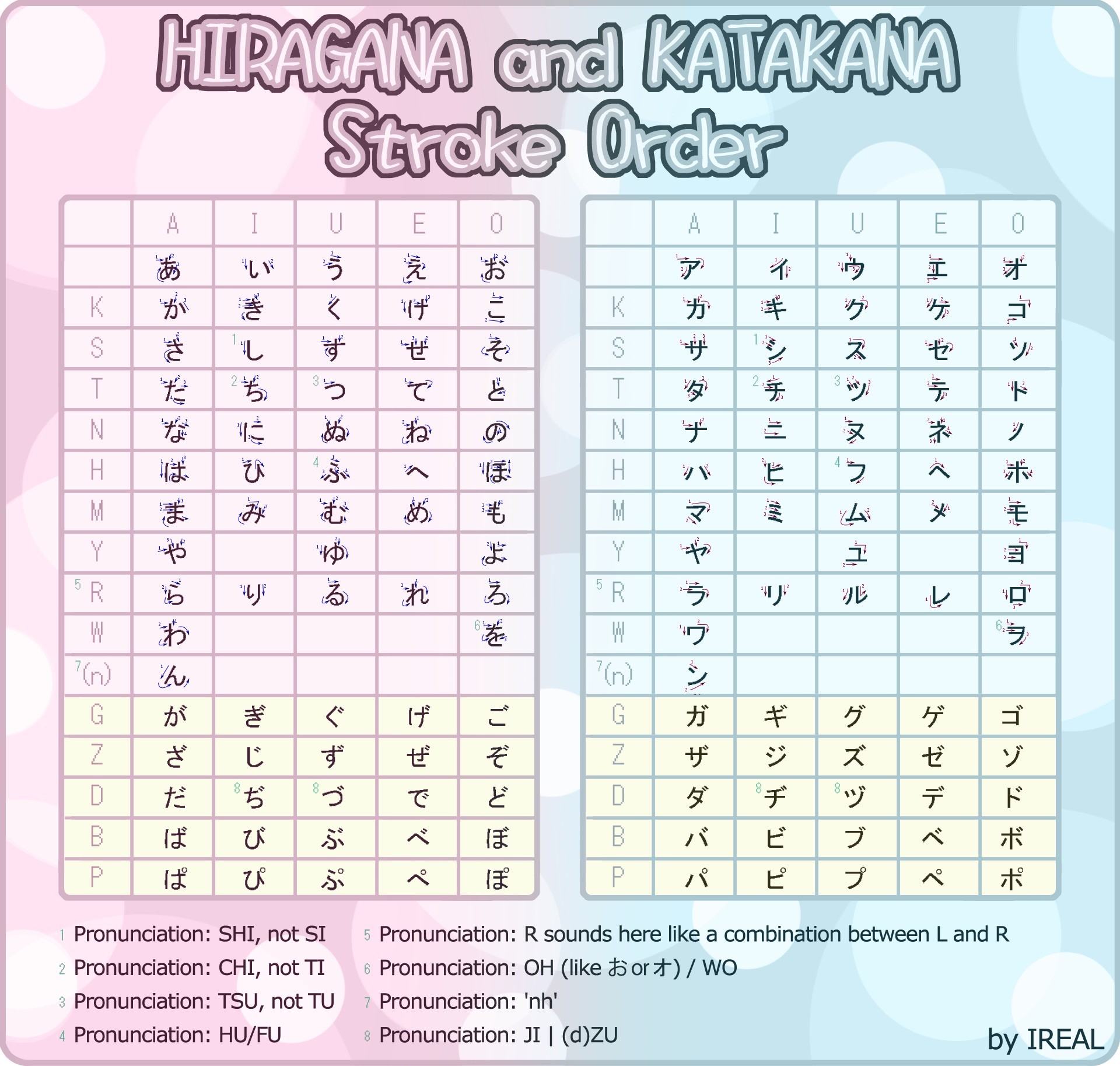
Click to view large image
When you’ve done that you should go on DJT Kana and check all the kana by going in «show/hide» and test yourself. Make sure you also scroll down and check all for hiragana combinations and katakana/katakana combinations!
Steps if you got confused:
After a week or so, you should have all the kana nailed down.
Kanji¶
Kanji, literally meaning «Chinese Characters» is the third part of the Japanese writing system. They are logographic and therefore much more complex than kana. There are 2136 kanji taught in the Japanese school system, however don’t let this fool you.
Around 3000 or more are used in daily life. Kanji are used when they are used. You will eventually understand what this means when you get a little more advanced in Japanese.
Above is a page from the Love Live! Sunshine!! manga, showing hiragana, katakana and kanji.
There’s two ways to approach kanji. One is kanji with vocab which is to learn words from reading without studying the individual kanji. You can fully comprehend «守銭奴» without knowing what the individual kanji mean just by looking it up in a dictionary.
The other is isolated kanji study which is studying the meaning and composition of the individual kanji. Example: «守»(guard)»銭»(coin)»奴»(guy) = cheapskate. Huh? It’s pretty smart. Isolated kanji study can make remembering vocab easier, but it can put you behind due to the amount of time it takes, so it is up to you to decide whether it is worth it.
※ Another interesting thing about kanji with vocab, is that if you know other words that also use the kanji of said word, it can become easier to remember. (Example: If you can comprehend «守護», «銭湯» and «売国奴» then «守銭奴» becomes easier)
How to: Kanji with Vocab
This is the most simplest approach to kanji, and it is the approach I took personally. Most people will be able to read kana just by referring to the kana chart, but you can’t do the same for kanji. So how do you learn to read kanji?
Look at the manga picture above. Look at the first panel. You see «人数»? That’s a word. Look it up in a dictionary such as Jisho. You get the reading: «にんずう (ninzuu)» and the meaning: «number of people». Cool, move on. That’s it. But don’t expect to remember words just by looking it up once, that is why you should read a lot to build up and retain kanji skill. At the end of the guide I will go through how to make the process of looking up words easier.
How to: Isolated Kanji Study
When approaching kanji as a beginner, they can look like scribbles rather than familiar shapes. Kanji have common shapes and patterns and Isolated Kanji Study helps you see those common shapes and patterns. Instead of «草» looking like a random drawing, you can see that it’s composed from «艹», «日» and «十».
An isolated kanji study method I recommend is Kodansha kanji learner’s course (KKLC), you can get the book here and a study guide here. Don’t learn the vocabulary in the book! Only learn vocabulary as described in the Vocabulary and Mining sections.
With that said, by reading and looking up words for hours and hours on end, you will learn how to recognize kanji intuitively, however many people may struggle to read Japanese kanji without prior study, and isolated kanji study might help you in this case, as it gives you a hint of what the kanji means beforehand. However isolated kanji study is a significant time investment that does not contribute to knowing Japanese in any meaningful way, and to truly «learn kanji» you need to do kanji with vocab anyway. You should decide by yourself whether or not you want to do isolated kanji study.
Vocabulary¶
The bulk of your language learning journey is learning vocabulary, so you will be doing a lot of it.
Anki is a spaced repetition system (SRS) flashcard program. It is designed to help you remember information. You can get it here
You should use Anki to build up a vocabulary of basic words to assist your immersion, after that learning vocabulary from immersion, especially in reading, becomes easier. Usually people use the Core 2K deck to build up a vocabulary of 2000 words. It works by showing you the word you need to learn at the front, and it has the meaning and how to read it at the back, along with a voiced example sentence. You learn words with Core2K by recalling the meaning and reading of the displayed word. However, I advise against using Core 2K, and suggest you do Tango N5+N4 instead, and here’s why:
Core 2K is significantly harder than Tango N5+N4 because Tango has the sentence on the front, Core 2K has only the word on the front.
Tango decks work by showing you a sentence at the front, and the piece of information (a meaning and reading) needed to understand the sentence at the back. You click «Good» whenever you understood the sentence, and «Again» when you did not.
The «N» number in the deck name refers to the Japanese Language Proficiency Test (JLPT), with N5 being the lowest, easiest and N1 being the highest.
Sentences make recalling vocabulary easier, after all, it is much more close to how we use language in real life as opposed to isolated words.
However, it is important to note that Tango’s translations are not literal, and do not represent Japanese structure well, so I guess that’s a flaw of Tango. In other cases, it might be utterly wrong.
People have always struggled with Core 2K, and to make the process smoother, I recommend Tango N5+N4 over Core 2K. Especially if you don’t want to do isolated kanji study!
I recommend you start learning vocabulary using Anki after you have learned the kana and know extremely basic grammar. How basic is extremely basic is up to you to decide. I will go through how to study grammar after this section, so don’t panic.
Grammar¶
When approaching grammar, it is important to know that the purpose of a grammar guide is not to make you a master at the language, but to give you only a basic understanding of how things work in the language, and then a true understanding of grammar can only be achieved through immersion. Therefore, I recommend you choose a grammar guide, read/watch it and do immersion.
Choosing a grammar guide
There are many grammar guides out there, some are good, but some are bad. To prevent confusion amongst learners, i will only mention 2 grammar guides. Tae Kim and Cure Dolly. No grammar guide is perfect, they each have their ups and downs. Tae Kim is written pretty well, and very beginner friendly, however some of his explanations may be a little off and it can get boring to read. Cure Dolly takes an unorthodox approach to Japanese grammar, trying to teach Japanese grammar in a more Japanese “organic” way. However, Cure Dolly is not the most absolute beginner friendly, you need at least some background knowledge before using. Also, the audio is very poor.
You can find the 2 grammar guides below:
Tae Kim
There is also an Android and iOS app for offline viewing!, note that everything in this guide is considered to be «basic Japanese», even the “advanced” section
Cure Dolly
I recommend turning on subtitles and setting the speed to 1.25x!
With that said, I suggest doing grammar study in conjunction with your immersion and vocabulary study.
Mining¶
Mining means when you add vocabulary (often along with the sentence they were found in) into your Anki deck. You can then review these flashcards overtime to make sure you don’t forget them. It usually recommended you begin mining right after you finished Tango N5+N4. You should not bother with Tango N3, N2 and/or N1 because at this point you should be making your own flashcards from your immersion, which is overall a fun process.
Mining is something you will be doing for a long time, so this is pretty important.
There’s a lot of disagreement when it comes to “formats” of mining, but I think the «Anime cards» format is very good, and has served me really well.
Animecards Vocab Cards
Animecards are High Quality vocab cards which are different to standard vocab cards. Standard vocab cards simply have the word in kanji form on the front, and the reading and meaning of that word at the back. High quality vocab cards, as opposed to standard vocab cards, have the audio of the sentence (from an anime or voiced Visual Novel), also a picture (from an anime or Visual Novel) and the sentence it came from at the back, making them much more superior to standard vocab cards.
I think it is good to graduate sentence cards after you finish Tango N5 and N4 (Tango decks are sentence cards by the way), as vocabulary cards become easy and quick as you have familiarzied yourself with simple Japanese.
※ They are known as “Anime Cards” because of AnimeCards Site
Benefits
+ Easy to set up
+ Quick to review. I average 500 cards in 30 minutes with these.
+ Able to mine everything and anything (does not follow i+1)
+ Compensates for words with multiple meanings with the hint field.
After you have finished the Tango N5 and N4 decks, you should read this site AnimeCards Site to learn how to set up a mining deck.
How to Immerse (inputting)¶
What you need to do when immersing is different depending on what stage you are on. This is why making a one size fits all Japanese guide is difficult. I will only go through what you need to do as a beginner.
Listening¶
First of all, when it comes to immersing, you must learn to tolerate the ambiguity. The point is not to understand everything. It is not uncommon for learners to feel down over not understanding anything but I think it is totally fine not understanding, you should make merry every word you recognize, every little bit you do understand and just because you don’t understand now, that doesn’t mean you will not always not understand. The most important part of learning Japanese is enjoying yourself .
When you are a beginner, I recommend doing listening immersion over reading immersion. This is because when you first approach a foreign language, you are not yet used to the phonemes (sounds) of the language, so reading may give you a poor accent, this is when you associate similar, yet wrong phonemes from your native language to Japanese, it is impossible to read without mapping some phonetic component, so you can only avoid this by first getting used to the phonemes and you can only do this by doing raw listening.
Furthermore, listening just flows without stopping, so you feel more comfortable when immersing. On the other hand, reading as a beginner is very frustrating as you need to constantly look up words probably every second.
Surprisingly, there are many i+1 opportunities in listening immersion as a beginner, especially when you are studying grammar and vocabulary alongside your immersion, so it still passes as comprehensible input, even if you don’t understand other parts. But language is not acquired through incomprehensible input remember? That is true, however, you are still benefiting from incomprehensible input but in a different way; it is improving your ability to distinguish phonemes, in other words giving you a better accent. Immersing even if you don’t understand much is also a great way to build up a habit of interacting with your Japanese.
With that said though, immersion (input) at this stage will still be largely incomprehensible, however you can change that by working through the Tango Anki decks.
Please note that you need to pay attention to your immersion. (Active Immersion).
Just putting it on in the background and not paying attention (Passive Immersion) is not going to help you.
Choosing what to immerse with
It’s usually best to immerse with something with a visual and audio component, such as anime and j-drama (TV Show). TV shows have a visual component, and also a plot, so this brings more i+1 opportunities. It is not recommended to immerse with say, a podcast or an audiobook as a beginner, as it will be difficult to perceive what is going on. If you are learning Japanese, then chances are you are a fan of anime so you can use that to immerse, and even anime you have seen in the past.
What is also pretty helpful is reading an episode summary of the episode on Wikipedia before watching it, this can help you understand the plot more, so you can make more acquisition gains.
What do I need to be “doing” while actively immersing? (As a beginner)
Try to understand messages. There is a lot you can infer from a TV show. Like Krashen says, you need to have “meaningful” (meaning focused) interaction with the language, rather than focusing on form (such as grammar).
Reading¶
Reading, no matter what stage you are at, can benefit you greatly. However, as a newbie to the language, there are a few problems that arise when it comes to reading early on in the process.
Reading early can have a bad effect on your accent. And your reading ability may not always transfer (being able to hear the new words you learned) to your listening ability, especially if your listening ability is considerably low.
When you’re a beginner, I recommend watching Japanese subtitled anime for reading practice. Japanese subtitles are reading immersion at best, similar to a voiced visual novel. Having the voices in the background isn’t going to save your accent nor improve your listening skill, you need to do raw listening. You can see animecards.site to learn how to watch anime with Japanese subtitles.
Anyway, I think it is good to start out with Japanese subtitles for reading. And transition to manga, and then light novels/visual novels and so on. I think it is important you pace yourself when reading and don’t burn out trying to read hard novels as a beginner, it is usually better reading books that are not too far off from your level.
In our Resources you can find links to sites that let you read a lot of Japanese manga and novels, for free. And Japanese subtitles too, so make sure you check that out!
Finding the balance between listening and reading
Balance is important. It may be obvious just to split your time up in half, and if you are able to do that, then that is great. However, not everyone has the time, and when it comes to reading, depending on your current level, it may be considerably difficult to read for extended hours. For example people that have gotten further in the Tango Anki deck may be able to read longer than those who are a little behind.
So what is the perfect balance?
I cannot answer that, that is up to you to experiment and decide. It all depends on your schedule and current level. You don’t need to do reading from day 1, give it a few weeks until you can read basic words from the Tango N5 Anki deck.
Summary¶
Final Notes¶
That’s it. You can get fluent in Japanese just like that. But don’t forget that the most important part is immersion, Anki and grammar only assist your immersion.
Music is not immersion.
However, you can use the lyric sheet as reading practice.
This guide would have not been possible if it was not for Stephen Krashen, Mass Immersion Approach, All Japanese All The Time, AntiMoon, Daily Japanese Thread/Itazuraneko, and my brothers and sisters here in TheMoeWay. Thank you all!
You should not expect to comprehend this guide the first time you read it. Take your time and read it as many times as you can until you finally get it.
How to Learn Japanese in a Month (Protip: It Takes a Lot of Hard Work)
You’ve probably seen blog titles like “Get Fluent in an Hour!” and “Learn 5,000,000 Kanji in Two Days!”
These wild promises are pretty ridiculous since everybody learns a second language differently and at different speeds.
Instead of telling you how to learn Japanese, this post has a game plan and resources designed to help you learn Japanese in less than a month.
In other words, we can provide you with the suggestions and tools you need to become passably conversational in about four weeks—the rest is up to you.
Contents
Download: This blog post is available as a convenient and portable PDF that you can take anywhere. Click here to get a copy. (Download)
Is It Really Possible to Learn How to Speak Japanese in Less Than 4 Weeks?
If we said no, this would be a pretty short blog post wouldn’t it?
With hard work, the right tools and daily practice, just about anybody can learn usable Japanese.
You can reach a high enough level to survive a stay abroad in the country. If you’re just learning for enjoyment, you can use this guide to fast-track yourself to mid- to high-beginner level.
Let’s get one thing clear: You won’t become fluent in a month. (Unless you’re some foreign language genius.)
But you can absolutely learn what you need to get by with a month of studying. It’s all about finding what resources are best for you.
We recommend printing this page or writing down the steps with their resources, and going through each step and link one by one. As you complete each resource, cross it off.
Give yourself a deadline to reach the end of the post: a month from when you begin studying.
At the end of the month, you should be able to form coherent sentences, read some basic text (with furigana) and understand some spoken Japanese. You’ll be surprised at how much you’ve learned!
4 Steps to Learn Japanese in Less Than a Month
1. Use the Best Apps and Resources
Set your pace and schedule
There are so many apps out there that focus on daily lessons designed to fit a pace that the learner is comfortable with.
Want to jump right into hour-long lessons? Go for it! Only want to spare 15 minutes a day? This is doable.
But if you want to really get a handle on Japanese in four weeks, we suggest practicing Japanese and studying for 30 minutes a day at a minimum—aim for more study-time whenever you can!
Use apps to get you started
Japanese-learning tools and apps allow you to study wherever you are. Make use of that commute or replace your morning newspaper for a month with these, instead.
Try out some of these great language-learning apps to find what works best for you (or use all four!):
FluentU takes authentic videos—like music videos, movie trailers, news and inspiring talks—and turns them into personalized language learning lessons.
You can try FluentU for free for 2 weeks. Click here to check out the website or download the iOS app or Android app.
Try FluentU for FREE!
2. Learn the Japanese Sentence Structure, Grammar Basics and Word Order
A language isn’t just its vocabulary words or textbook full of common phrases. You absolutely should learn the basic phrases, especially if you’ll be visiting Japan with only a month to learn how to speak a new language (and we have some useful travel phrases for you later in this post).
But it’s also important to get a handle on Japanese grammar and sentence structure. This way, you’ll at least have a little bit of information memorized to help in a contextual situation where you’re not entirely sure what someone said or how to respond.
It’ll also get you ready to build more grammar and vocabulary into your Japanese knowledge. Finally, it’ll give you more versatile use of all the words you’re learning!
Below are some essential grammar concepts even absolute Japanese learners should know.
Learn proper particle use
Japanese particles are words that come after modified nouns, adjectives, verbs and phrases in Japanese.
These little words or sounds are an integral part of the Japanese sentence structure and indicate parts of speech, questions and exclamations and much more. Certain particles can also help show enthusiasm, cuteness, aggression, humor, etc.
To learn about Japanese particles and how to figure them out, check out these resources:
Grammar forms to learn first
Japanese grammar forms or “verb forms” are used to indicate various types of past, present and future tense. English also has verb forms, but our language is significantly different than Japanese so it may take some getting used to the Japanese verb forms.
The Japanese language has several verb-based tenses, including the plain, “te,” conditional, potential and imperative forms.
Learn the basics of Japanese grammar forms here:
Beginner vocabulary words and phrases
Whether you’re studying for a trip or for your own enjoyment, having a core vocabulary will create a solid foundation that you can build your future learning on. After all, you can’t learn grammar if you don’t know any words to string into sentences.
Stock up on important vocabulary words and travel phrases with these awesome resources:
Understanding Japanese word order
Okay, we know this may sound kind of scary.
Japanese word order is very different from English and trying to grasp it may seem a bit advanced. But knowing the bare-bones basics of Japanese word order will be handy contextually when you start speaking Japanese: it’ll help you understand the basics of a sentence, even if you don’t know all the words being used.
If you’re stuck on how Japanese word order works, look into these useful guides:
3. Get the Gist of the Japanese Writing Systems
We mentioned earlier how important it is to focus on speaking, listening and comprehension in order to learn passable Japanese in a month. That being said, it’s still wise to understand the basics of Japanese writing systems.
Start with hiragana
Kanji is a complicated writing system that’s beyond the scope of this guide. Even native Japanese speakers spend years achieving fluency with kanji, so we don’t recommend tackling it in just a month.
However, you should definitely look into some of these resources that explain the common Japanese writing system called hiragana:
Some Japanese text is accompanied with hiragana readings of the included kanji (this is called furigana), so knowing hiragana is an excellent start to studying the written language.
Once you feel comfortable enough with hiragana, you can move on to learning the other writing systems of Japanese, starting with katakana then moving on to kanji—just be aware that kanji learning will be an ongoing process.
Don’t despair! Take it one step at a time.
4. Talk and Listen to Native Japanese Speakers
You’ll hear any linguistic teacher tell you this, no matter the language being learned: If you want to understand a new language, you can’t just study on paper. You’ll need to listen to native speakers.
This is true for many reasons, the biggest one being comprehension skills.
You may think you have an idea of what Japanese sounds like, but you really don’t get the nuances and pronunciation until you hear it from a Japanese person’s mouth.
It’s also crucial to listen and speak Japanese constantly to improve your fluency. Improving and growing in Japanese is like exercising a muscle: if you don’t work it out, it won’t get swole.
Communicate with native speakers
To listen to and communicate with native Japanese speakers, try out some language exchange sites. These sites match learners with native speakers: you teach someone English (or your native language) and in return, they teach you Japanese.
Here are some of our favorite language exchange programs:
Watch Japanese media
If you don’t feel ready for one-on-one communication, you can still get some listening practice by watching Japanese movies, television shows and dramas as soon as possible.
Some of our favorite spots to binge watch Japanese media are:
Are you feeling a little less nervous about your future Japanese language-learning journey? The internet is packed with awesome resources perfect for the beginner learner—all you need is a little help finding them.
Good luck and happy learning!
Download: This blog post is available as a convenient and portable PDF that you can take anywhere. Click here to get a copy. (Download)
Emily Casalena is a published author, freelance writer and music columnist. She writes about a lot of stuff, from music to films to language.
How to Learn Japanese: A Guide for Absolute Beginners
7 Steps to Start Mastering the Japanese Language
If you are beginning your journey to learn Japanese, an exciting world awaits you. With Japanese, you’ll be able to live and breathe in all that Japan has to offer.
You can meet amazing people, experience the unique culture, and try some of the best food in the world. Of course, you’ll be able to watch all of the anime and Japanese movies you want too 🙂
Learning Japanese is NOT as difficult as people say it is. I think that overall, Japanese is much easier to learn than English. If you work at it consistently, you’ll be speaking and reading Japanese in no time.
This step-by-step guide has everything you need to get started learning Japanese. There are lessons, book recommendations, resources, and much more. Follow these 7 steps and you’ll have a good foundation of Japanese to build upon. So let’s get started!
Absolute Beginner Japanese Course:
Skills Needed: None
In this guide you’ll learn:
Step 1: Master Japanese Pronunciation
The first thing you need to master is the Japanese pronunciation. This is the most basic step, but it is the most important. Once you master all of these sounds, you’ll be able to pronounce any word in the Japanese language.
It’s so easy that you can learn all of them in a few minutes, and remember all of them in a few hours if you put in the effort.
Check out this video from Japanesepod101 that explains some of the basics of Japanese pronunciation.
Many of the sounds in Japanese are similar to English, and there are no complicated rules or exceptions. Unlike English, there are no silent letters, different pronunciations with different letter pairings, or variations in pronunciation. If you want to hear all of the different pronunciations in Japanese, you can check out our hiragana guide that shows you how read and pronounce all of the sounds in Japanese.
Here are 4 lessons on Japanese pronunciation. Complete these and you’ll know all the sounds of Japanese.
How to Master Japanese Pronunciation in 4 Easy Lessons
Lesson 1: The 5 Vowels
There are 5 vowels in Japanese: A, I, U, E, O. These 5 vowels are the foundation of all the other sounds in Japanese (with a few exceptions). They are the same vowels we use in English, but they are pronounced a little bit different.
A: “ah” as in “father”
I: “ee” as in “eel”
U: “oo” as in “food”
E: “eh” as in “egg”
O: “oh” as in “oh my goodness!” or “over”
Watch this video to hear how these 5 vowels are pronounced and learn how to say them correctly.
Lesson 2: Vowels + Consonants = All Basic Sounds in Japanese
If you combine these vowels with a consonant (k, s, t, n, h, m, y, r, w) you’ll produce all of the basic sounds in Japanese.
Let’s look at an example. Let’s take the consonant “k.” If we combine this with all of the vowels, we get:
k + a = ka
k + i = ki
k + u = ku
k + e = ke
k + o = ko
This can be done with all of the other consonants (e.g. na, ni, nu, ne, no: ra, ri, ru, re, ro: ma, mi, mu, me, mo, etc.)
Here’s a great video that will teach you about the basics of Japanese pronunciation. It comes from George Trombley, who is the co-author of the book series, “Japanese from Zero.” While this book can too “fun” for older students of Japanese, the lessons are easy to understand, fun to study, and teach you useful Japanese. If you’re looking for a great book to get started with, this is one of the best.
To see all of the books I recommend for absolute beginners of Japanese, go here: Best Japanese Books for Absolute Beginners
Lesson 3: Exceptions
However, there are a few exceptions. The good thing about these exceptions is that you already know most of them. There are many words that we use in English that actually came from Japanese. Some of these words are spelled using these exceptions of Japanese pronunciation. Let’s check out these exceptions here.
The “S” Row: Sa, Shi, Su, Se, So
In the “s” row, you would expect it to be “sa, si, su, se, so.” However, we need to add an “h” to the “si” sound, so it becomes “shi.”
The correct sounds are sa, shi, su, se, so.
A perfect example of this can be found in a Japanese dish that has become popular all over the world. This wonderful Japanese dish consisting of rice and fresh seafood is not “susi.” It is “sushi.”
The “T” Row: Ta, Chi, Tsu, Te, To
In the “t” row, you would expect “ta, ti, tu, te, to.” However, the “ti” is changed completely, and becomes “chi,” as in the Chinese martial art, “tai chi.”
The “tu” is also changed. We need to add an “s” to it, to change it to “tsu.” So the correct pronunciations for the t row are “ta, chi, tsu, te, to.”
Do you like baseball? Two of the most popular players from Japan in the MLB are Ichiro Suzuki and Hideki Matsui. If we didn’t change their names to the correct spelling, it would be Itiro and Matui.
The “H” Row: Ha, Hi, Fu, He, Ho
In the “h” row, you would expect the sounds to be “ha, hi, hu, he, ho,” but the “hu” in the h-row becomes “fu.”
For example, “tohu” is a word that most of us have never seen before. But since “hu” changes to “fu,” this word in Japanese would then be “tofu,” which has become a standard food in many countries around the world.
Lesson 4: Additional Sounds
In addition to these basic 46 sounds in Japanese, there are 68 other sounds found in the Japanese language.
68. That’s more than the number of basic sounds!
Once you master the 46 basic syllables, these 68 other sounds will be easy to learn. The reason for this is because all of these additional 68 sounds are built from the basic sounds. Creating these additional sounds are very systematic and logical, so it is easy to learn.
For example, the “h” row of Japanese sounds (ha, hi, fu, he, ho) can also be changed to ba, bi, bu, be, bo or even pa, pi, pu, pe, po.
It is much easier to see how this works when we learn how to write the Japanese characters. Just keep in mind that all of the sounds in Japanese can be made from building off of the basic sounds you just learned.
In step 3 below, we’ll learn how to write out these sounds using Japanese characters. When you learn to write all of the characters, you’ll see in detail how to create all of the other sounds in Japanese. Complete the lessons in step 3 and you’ll master all of the sounds in Japanese in no time.
If you want a more detailed look into the pronunciation and reading of hiragana, you can check this video out from Japanesepod101.
Step 2: Learn Romaji…And Then Don’t Use It
Romaji is one of the four writing systems that is used in Japanese. It is the English spelling, or Romanization, of Japanese characters.
See the examples listed in step 1 (sushi, tofu, Ichiro)? Yep, those are all written out in romaji. You have already read tons of these Japanese romaji words in your everyday life as well. Words like tsunami, karaoke, karate, ramen, etc.
Since romaji is written in English, we want to spend as little time as possible using romaji and jump straight into the other Japanese writing systems. Using romaji can actually hurt your learning and remembering of Japanese. Reading and studying Japanese should be done IN JAPANESE.
Most intermediate textbooks are written mostly in Japanese, so we need to be able to read Japanese characters if we want to attain fluency. So let’s jump right into learning some written Japanese characters!
Step 3: Learn to write Japanese: Hiragana
Hiragana is one of the four Japanese writing systems you’ll need to master. The other 3 writing systems in Japanese is romaji (explained in step 2), katakana (characters used mostly to express foreign words), and kanji (Chinese characters).
While kanji can be quite difficult to learn (because there are so many of them), hiragana and katakana is actually quite simple. We’ll start by learning hiragana, and then learn katakana in the next guide.
There are 46 basic characters in hiragana. If you have mastered Japanese pronunciation in step 1, then you already know how to pronounce every basic character in hiragana. You just need to know which character goes with each sound.
There are tons of ways to learn hiragana. But here are the best ways I have found to learn them.
Paid Methods: Costs a Few Bucks for Materials
If you want a complete guide for learning hiragana, and you don’t mind spending a few bucks, here are two resources that making learning hiragana easy:
These are two excellent resources that teach you everything you need to know about hiragana. However, if you don’t want to or can’t afford to purchase these resources, don’t worry! Here’s how you can do it for free.
Free Ways to Learn Hiragana Online
These 2 free ways to learn hiragana aren’t as complete and detailed as the paid methods, but contain more than enough information for you to learn all of the characters.
#1: We published a complete guide to learning how to pronounce, read, and write each of the hiragana characters. This is a MASSIVE guide but goes through each character step-by-step with videos, so you can learn them all easily. Check it out here: The Complete Guide to Learning Hiragana
#2: Go through these 4 lessons and you’ll be a pro at reading and writing hiragana!
Lesson 1: A Quick Introduction
Check out the first 3 videos showing you how to write hiragana from Japanesepod101 here: Learn How to Write Hiragana
Unfortunately, only the first 3 lessons are free, but that is enough to give you a general understanding of how to read and write the hiragana characters.
Lesson 2: Complete the Online Hiragana Course
Go through the free online hiragana course from Japanese-lesson.com here: Complete Hiragana Course
The material that they teach is excellent, and will help you to read and write all of the hiragana characters. Be sure to go through both the reading and writing lessons for each lesson.
Lesson 3: Practice Writing All of the Characters
For writing practice, download the hiragana practice sheets. They will help you to remember each character as well as improving your writing skills.
Lesson 4: Having Trouble Remembering? This Resource Might Help
If you are having trouble remembering some of the characters, check out Tofugu’s learning hiragana page.
They provide an illustration for each character to help you remember them. Mnemonics aren’t for everyone, but this is a good resource to use if you need help remembering characters that give you a hard time.
The only thing that I disagree with is that they say NOT to practice writing the characters. Sure, if you just learn how to read them, you remember them faster. However, this will actually hurt you in the long run.
Writing in Hiragana: Why it’s Essential for Mastering Japanese
Here are 5 reasons why you should practice writing the hiragana characters.
1. You’ll learn them better and actually MASTER each character if you practice writing them.
If you only know how to read the characters, you won’t have a complete understanding of them. By learning the basic strokes of hiragana now, it will help you to understand how more complicated characters are formed later.
2. Writing will actually help you to read each character better.
You’ll be able to understand other people’s handwriting better if you know how to write the characters yourself.
3. You’ll learn correct stroke order.
Unlike English, each written character in Japanese is written in a specific stroke order. Why is this even important? The correct stroke order helps you to give the character balance when you write it by hand. Besides looking beautiful, a well-written character is essential since there are some characters that look very similar to each other. Also, when you learn kanji (Chinese characters adapted and used in Japanese), knowing the stroke order will be even more important. You’ll need to know the stroke order to look up an unknown kanji in a dictionary.
4. Unlike a lot of kanji, you will actually USE hiragana.
If you visit Japan for a long period of time (long vacation, studying aboard, job, etc.) you will definitely run into a situation where you’ll need to write something in hiragana. Knowing how to read AND write hiragana will make your stay in Japan much better. At the very least, it is another tool in your arsenal to communicate with Japanese speakers.
5. As your Japanese improves, you will find that reading and writing in Japanese is a very good way to take your skills to the next level.
If you don’t know how to write, you won’t be able to improve your Japanese in this way. This can actually hold you back from improving your Japanese when you get to a more advanced level.
Final Note: Imagine you’re teaching English as a second language to someone. Would you tell them NOT to practice writing the alphabet?
Sure, typing and texting has replaced many of the things we used to write by hand. But it is still very common to use handwritten English in everyday situations.
Wouldn’t it be weird if you met someone who spoke English fluently and could read their name in English but couldn’t write it? Would you consider that person truly fluent?
The time it takes you to learn how to read and write hiragana now will benefit you in the long run.
Step 4: Learn a Few Phrases to Get You Started
If you want to become fluent in Japanese, you’ll need to learn grammar, vocabulary, reading and writing, and most importantly, using what you learn in conversation by speaking.
But before we dive into learning basic grammar and words, let’s have a little fun and learn a few useful Japanese phrases you can use right now.
How to Introduce Yourself in Japanese
In Japan, introducing yourself to others is a rather formal process when compared to Western countries. If you stay in Japan for a while, or especially if you find a job in Japan, you will be introducing yourself A LOT.
You’ll probably have to do a self-introduction of yourself in front of your co-workers on your first day of work.
Even when you meet new people at a party or even a bar, you’ll be using the Japanese you learn here to introduce yourself.
So let’s take a look at a simple and effective way to introduce yourself in Japanese!
Check out the self-introduction lesson here: Introducing Yourself in Japanese
The 25 Most Common Phrases Used in Japan
If you are feeling up to it, this cute video about the 25 most common words and phrases used in Japan is also great: The 25 Most Common Phrases We Use in Japan
Step 5: Learn Basic Grammar
Learning grammar is the backbone to mastering Japanese. You’ll be able to have small conversations in Japanese just by learning a few basic grammar patterns.
I highly recommend that you get a book and/or an online learning program that teaches you the most useful Japanese grammar. Using a good textbook or learning program with the resources below will give you the best results in the shortest amount of time.
However, if you can’t afford to buy any learning materials, don’t worry. I have found and used excellent online resources that are completely FREE.
While it’s hard to find free online lessons for intermediate or advanced students of Japanese, there are some outstanding resources for beginners.
Here are 3 lessons with the best resources I have found for learning Japanese grammar.
The Basics of Japanese Grammar in 3 Lessons
Lesson 1: A Quick Introduction to Japanese Grammar
Lesson 2: Learn a Few Basic Conversational Grammar Patterns
These free audio lessons with printed guides from NHK is an excellent resource to learn some useful Japanese grammar and expressions.
There are 48 total lessons, but you don’t have to complete all of them. Complete the first half of the lessons (the first 24 lessons). Make sure you listen to both the audio files and read the printed material as well.
Go to the NHK lessons here: Easy Japanese Lessons
While the lessons are very good, they aren’t 100% complete. This course teaches very good conversational Japanese, but it is missing a lot of material that you should learn to build up a solid foundation of the basics.
Let’s go the next lesson to see how to fix this problem.
Lesson 3: An Excellent Written Reference
To fill in many of the gaps that the NHK lessons have, check out Tae Kim’s online resource for learning Japanese.
As a beginner of Japanese, using this online guide alone would be a little difficult. Some lessons assume that you already have some knowledge of the Japanese being taught.
Using Tae Kim’s guide along with the other resources in this guide will help you to learn more effectively. The other resources in this guide has audio and video files that features native Japanese speakers. You’ll be able to hear the correct pronunciation as well as learning how to use the grammar/words in the right context.
Honestly, this will take a lot of effort to study all of the free materials in this guide at the same time (NHK audio lessons, Japanesepod101 lessons, and Tae Kim’s online guide). That is why I recommend getting a book, which organizes all of the information in one place.
But if you put in the effort, the information in these free resources are enough to take your Japanese to the next level.
Lesson 4: My Favorite Resource: Japanesepod101
My favorite resources that I have mentioned a few times in this guide is Japanesepod101. While you can pay for a premium membership to have unlimited access to all of their material, you can get by without it.
There are tons of video and audio lessons on the website, ranging from complete beginners to advanced learners. The lessons are organized by topic. The first 3 lessons of each topic are free. This means you can have access to dozens, if not hundreds of lesson for free.
The only negative is that you don’t have access to all of the lessons in each topic. However, just by studying the free lessons, you can learn TONS of beginning grammar and expressions. Check out their video and audio lessons here.
If you want to know more about the lesson at Japanesepod101, or are interested in signing up, check out my review here: Japanesepod101: Can You Really Learn Japanese in a Few Minutes a Day?
Disclaimer: I am both a member and affiliate of Japanesepod101. This means that if you were to buy a paid subscription to this service through one of my links, I would receive a small portion of that sale.
I will never recommend a product or service that I don’t believe in just to make a buck. I have been a member of Japanesepod101 for over 5 years (and still a member) and I truly feel that the lessons there have been a huge reason for improving my Japanese.
I can also provide special deals to the readers of my blogs. (65% off premium memberships, which is the biggest discount out there. Even when the company has special sales, it usually is a 30% discount or less.)
So if you do sign-up, you’ll get the best deal and save the most money. And I would be very grateful too 🙂 If you do make a purchase, I thank you in advance. If you don’t, I hope that the information in this guide will give you everything you need to start learning Japanese. You can also ask me any questions about learning Japanese and I’ll do my best to help you.
Step 6: Build Up Your Vocabulary
Once you learn the Japanese pronunciation and how to write in hiragana, learning new words becomes much easier. Just like in any other language, Japanese has thousands of words in their vocabulary. So where in the world should you start?
Go through these 2 lessons to build up a good foundation of Japanese words.
Learn Japanese Vocabulary with These 2 Lessons
Lesson 1: You Already Know Lots of Japanese Words!
There are lots of words used in English that come from Japan. The only difference is that in English, some of these words are pronounced differently. But now that you know how to properly pronounce Japanese, you can say these words correctly.
There are also words in Japanese that are taken from other languages. Many of these words are from English, and the pronunciation is very similar. You’ll learn a lot more of these words in the next guide.
For a quick introduction to these foreign loan words, check out this video. The Japanese displayed in the video is katakana, which is one of the writing systems in Japanese used to express foreign words. We’ll learn how to read and write katakana in the next guide.
